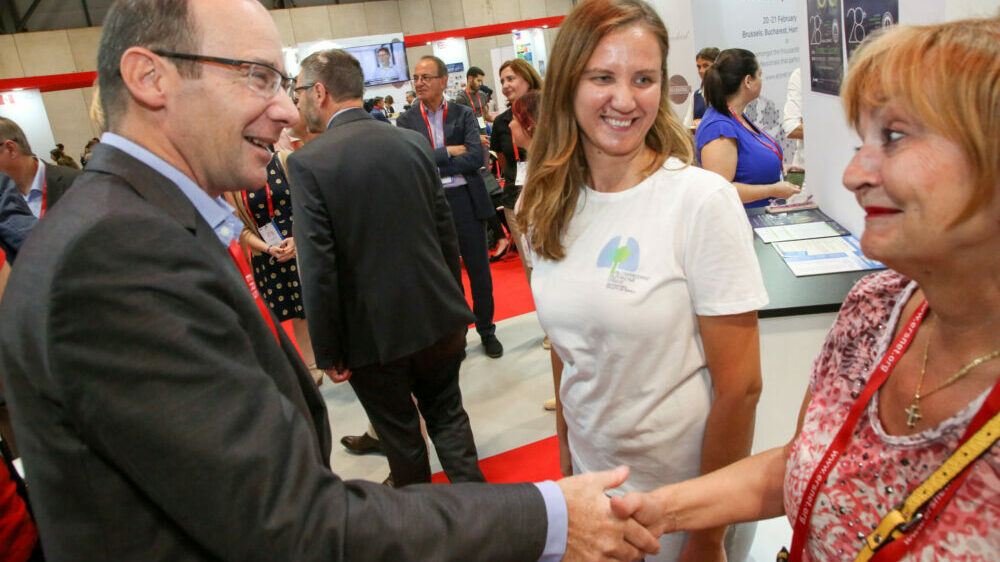The demand for home ventilation expertise in paediatric care has intensified with its potential to substantially improve the quality of life for young patients. Facilitating personalised care plans, minimising hospitalisations, and fostering family-centred support are pivotal benefits. As we navigate this webinar, we collectively address this growing need and equip ourselves to enhance the care we provide to our paediatric population.
Educational aims
The aims of this webinar are to provide participants with a comprehensive understanding of paediatric home ventilation, including its principles, benefits, and challenges while equipping them with the latest knowledge on equipment and technology. The session aims to empower healthcare professionals to make informed decisions, enhance patient outcomes, foster interdisciplinary collaboration, promote safety through monitoring and protocols, and enable family-centred care, all contributing to improved quality of life for paediatric patients undergoing home ventilation.
Topics
- Fundamentals of Paediatric Home Ventilation: Understanding indications, benefits, and challenges.
- Equipment and Technology: Exploring the latest devices, features, and personalised equipment selection.
- Patient Selection and Assessment: Criteria for candidate identification, comprehensive evaluations, and personalised care planning.
- Monitoring and Safety: Continuous monitoring, alarm systems, and emergency protocols for patient well-being.
- Collaborative Care Approach: Highlighting roles of paediatricians, pulmonologists, therapists, nurses, and caregivers.
Target audience:
- Paediatricians
- Pulmonologists
- Paediatric pulmonologists
- Respiratory Therapists
- Nurses
- Healthcare Administrators
- Caregivers
Format
This webinar will include one lecture, followed by a final round table discussion.
Learning outcomes
After following this webinar, participants should be able to:
- Differentiate between basic pressure non-invasive ventilation modes (such as Spontaneous (S), Spontaneous-Time (ST), Pressure Control (PC/PAC)).
- Recognise the importance of settings beyond pressure: Inspiratory time, Trigger/Cycle sensitivity, rise time.
- Appreciate the role of volume targeted pressure mode.
- Distinguish normal and abnormal leaks in NIV.
CME credit
An application for accreditation of this webinar has been made to the European Board for Accreditation in Pneumology (EBAP) for 1 CME credit per 1-hour attendance. If accredited, the CME credit will be granted upon attendance of at least 60 minutes during the live webinar only.
What is a webinar?
A webinar closely simulates a lecture-based teaching experience. The speaker can interact with the audience, just as in a classroom setting. During the webinar, you will be asked to share your opinion on issues related to the topic using interactive polls.
All participants will be able to hear the lecturer and see the slides throughout the presentation. As a participant you will be able to pose questions or discuss ideas with the other participants via the text chat facility and the speaker will respond to the questions via the microphone.
Login guidelines
More information will be communicated in due course.
- Please log in to the webinar 20 minutes before it is scheduled to commence. If you have any technical difficulties whilst trying to log in or during the session please contact e-learning@ersnet.org.
- Check Central European Time.
- To achieve the best quality, we recommend to avoid downloading anything from the internet during your connection to the lecture and stopping all other programmes.
- Please also ensure that your audio settings are not set to mute and adjust the volume to a comfortable level.
Diseases/methods:
- Paediatric respiratory diseases
Target audience
- Paediatricians
- Pulmonologists
- Paediatric pulmonologists
- Respiratory Therapists
- Nurses
- Healthcare Administrators
- Caregivers




